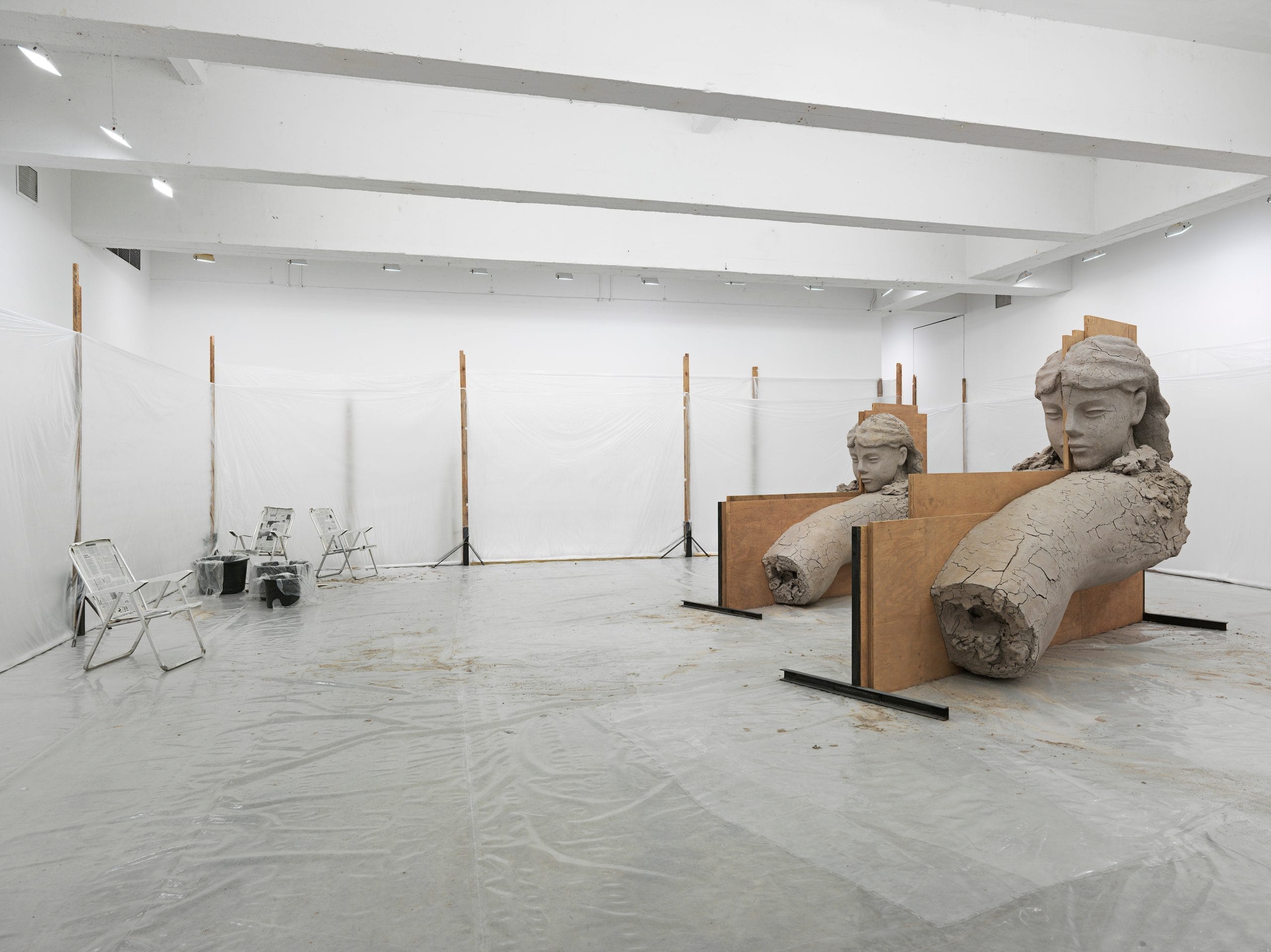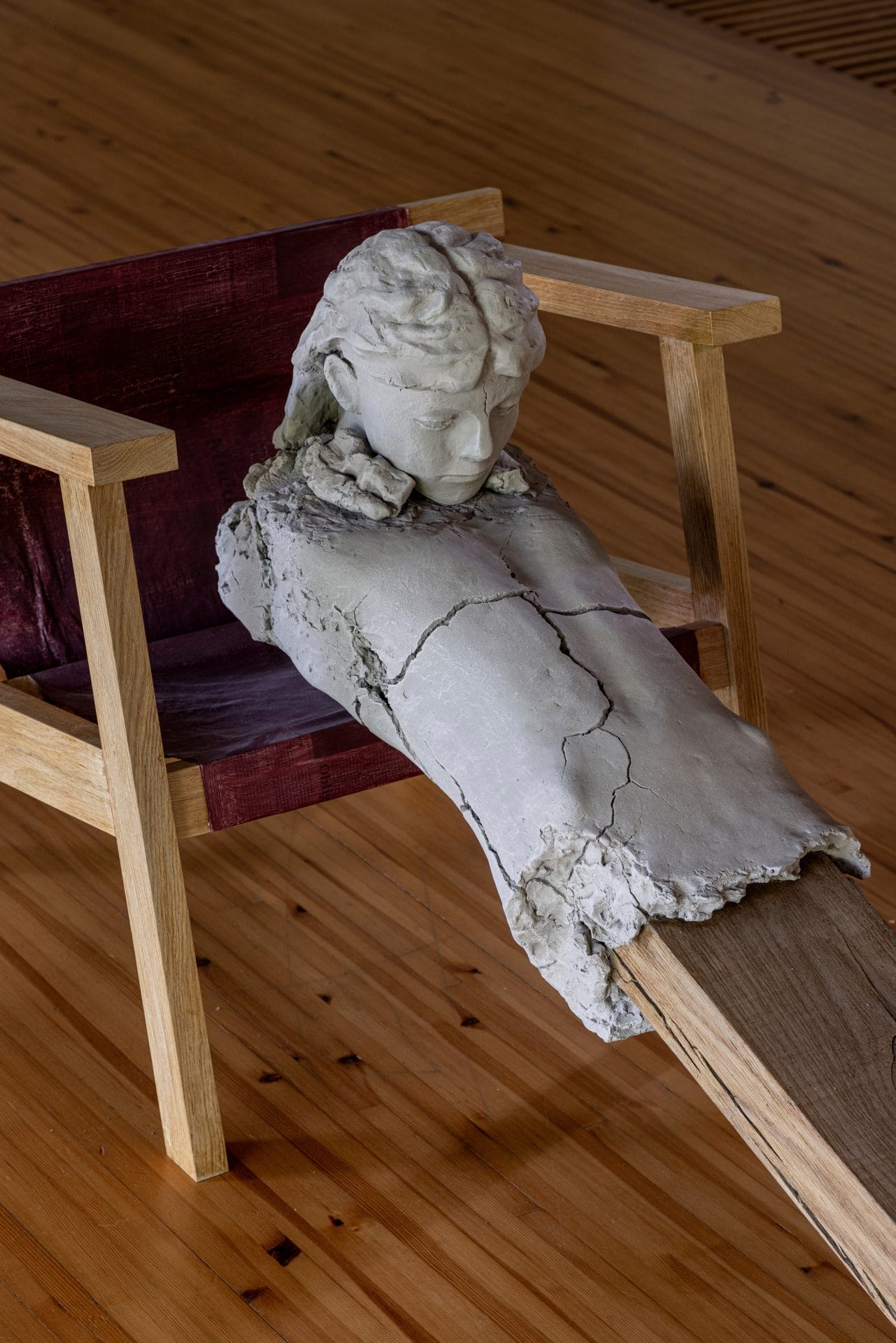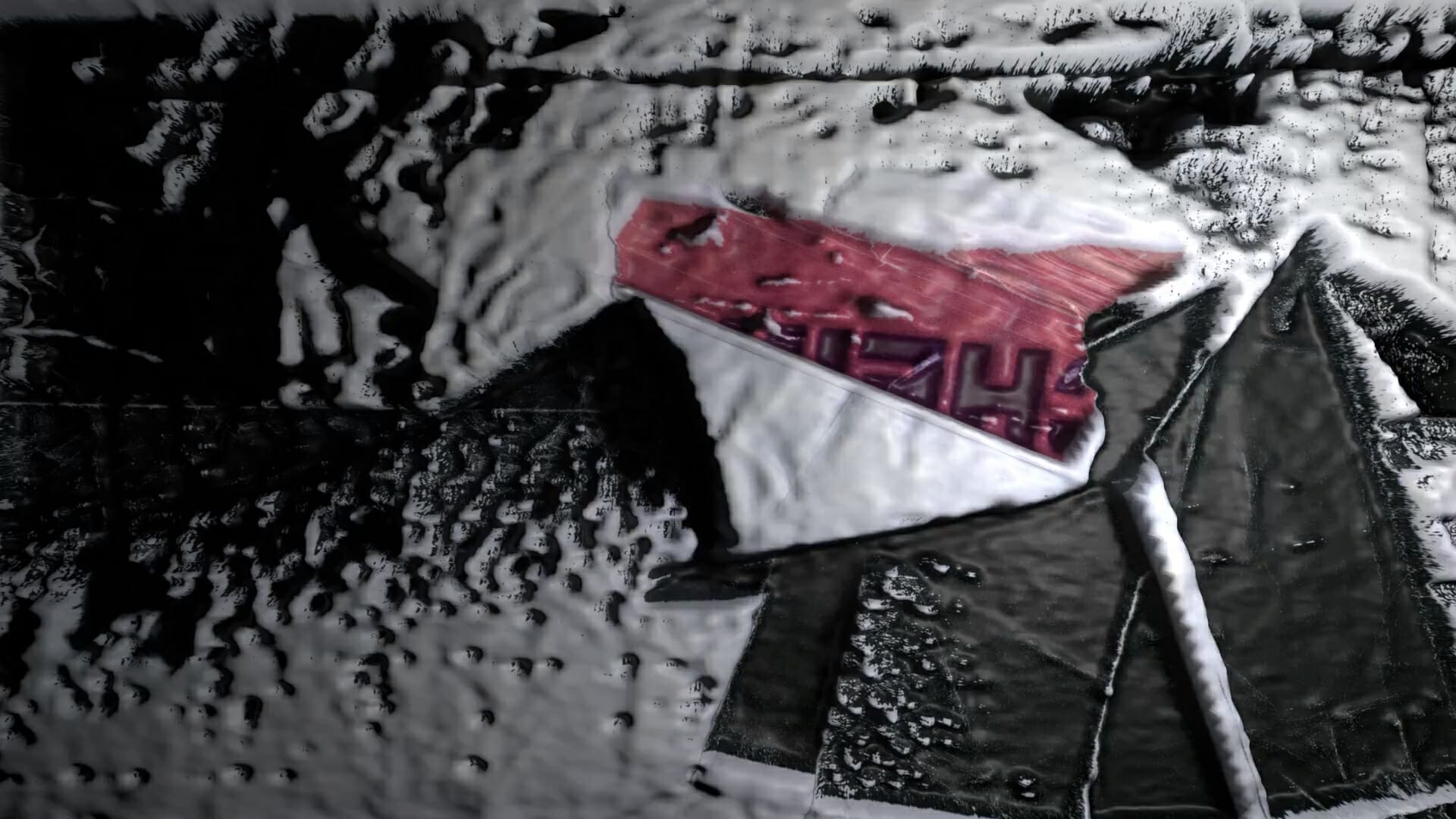
Mark Manders: The Architecture of Identity
Born in Volkel, Netherlands, in 1968, Mark Manders is a distinguished Dutch artist renowned for his installations, drawings, and sculptures. Living and working in Ronse, Belgium, Manders has established himself in the contemporary art world, with his works featured in numerous public collections globally.
Manders’ artistry is deeply conceptual, often described as surreal, haunting, and enigmatic. Since 1986, he has been developing his ongoing project “Self-portrait as a Building.” This work, a fictional building plan filled with objects representing a fictional artist named “Mark Manders,” is a continuously evolving piece, regularly incorporating new elements while discarding others. Initially conceived as a literary work, Manders transitioned it into a sculptural form to escape the constraints of language’s chronology.
In his monumental sculptures, Manders engages in an intensive process that begins with research and drawings, followed by the ancient lost-wax technique to cast the works in bronze. These pieces undergo seven stages of painting, eventually appearing like clay, a testament to his meticulous craft.
While specific philosophical themes related to the evolution of human consciousness, time, and thought as mentioned in your text are not explicitly detailed in available biographical sources, Manders’ work implicitly reflects on the human experience. His pieces are not just physical forms but are imbued with layers of conceptual depth, inviting viewers to explore the complexities of perception, reality, and the metaphysical interplay.
Mark Manders’ work embodies a distinctive fusion of tangible forms and conceptual depth. Each of his works serves as a portal, inviting a profound engagement with the intricacies of human consciousness and experience.

Self-Portrait as a Building: Mark Manders’ Lifelong Project
Mark Manders’ pivotal project, “Self-Portrait as a Building,” begun in 1986, stands as a cornerstone of his artistic oeuvre. This ongoing series transcends conventional self-portraiture by constructing a fictional architectural space that embodies the artist’s identity. Manders’ self-portrait is not a static image but an evolving structure, adapting and expanding over time, much like the artist’s own perception of self.
The concept of the self-portrait building originates from Manders’ interest in the interplay between language and physical space. Each room, object, and configuration within this imaginary building is meticulously chosen to reflect aspects of his identity and thought processes. For instance, the arrangement of objects like tables, chairs, and dead animals in his installations is not random but a deliberate act to evoke certain emotional and intellectual responses.
In this unique form of self-portraiture, Manders explores the idea of absence and presence. His installations often create a sense of someone just having left the scene, suggesting the artist’s presence through his absence. This duality is profound in understanding Manders’ approach to art as a means of exploring and expressing his identity. The building, with its changing arrangements and contents, becomes a metaphor for the artist’s mind – a space of continuous creation, alteration, and reflection.
Moreover, Manders’ statement about the building containing all words created by mankind underlines his deep connection with language and its influence on his art. The building, like language, evolves from interaction with life and things, becoming a repository of thoughts and ideas. This intertwining of language and architecture in Manders’ self-portrait challenges conventional perceptions of identity and self-expression.

Language and Memory: The Interplay in Manders’ Sculptures (Revised)
Mark Manders’ artistic expression uniquely intertwines language and memory, creating sculptures and installations that resonate deeply with these themes. His work transcends traditional art forms, using objects and structures to communicate complex narratives and ideas that engage both memory and linguistic elements.
Manders’ artistic evolution began with a deep interest in writing and poetry, which gradually transformed into a visual language where objects replaced words. This transition is a defining characteristic of his art, where sculptures often resemble paused sentences or frozen thoughts. These works invite the viewer to engage in a narrative that is suggested but not explicitly defined. For instance, his installations featuring everyday objects like tables, chairs, and light bulbs often appear in arrangements that suggest a hidden story or a paused dialogue.
The artist’s exploration of memory is another crucial aspect of his work. Manders creates spaces that resemble memory capsules, where each object and its arrangement carry a specific significance. These memory spaces, often static and seemingly unfinished, hint at the artist’s presence and contemplative process. This concept is evident in works like “Clay Figure with Iron Chair” and “Ramble Room Chair,” where human forms appear in states of incompletion or ambiguity, evoking the idea of memory being captured in a tangible yet elusive form.
Furthermore, the fragmentation and multiplication of forms are recurring themes in Manders’ practice. Works such as “Room with Fives,” where only fives of the same object are present, and sculptures like “Vertical Clouds,” where the human figure is divided into parts, reflect on the nature of memory – how it can be clear yet fragmented, complete yet incomplete.
Manders’ art becomes a medium for exploring the complex relationship between language and memory. His sculptures and installations are more than physical forms; they are representations of thoughts, memories, and the subconscious language. Through his work, Manders invites viewers to delve into the depths of their own memories and the language of their minds, creating a dialogue that transcends the physicality of art.

The Illusion of Reality: Manders’ Artistic Deception
Mark Manders’ work stands out also for its exploration of the illusion of reality. His artistic practice delves into the concept of deception, using sculptures and installations that challenge the viewer’s perceptions of what is real and what is artifice. This exploration is a critical aspect of Manders’ work, adding a layer of complexity and intrigue to his sculptures.
Manders’ installations often present scenes that appear as if caught in a moment of time, suggesting an ongoing narrative or action. However, upon closer examination, the viewer realizes that what seems to be a fleeting moment is, in fact, a carefully constructed illusion. For example, in “Room with Unfired Clay Figure,” the scene appears to be a snapshot of an artist’s studio, with objects like a bucket of clay and a workbench. However, the bucket contains epoxy, not clay, and the sculpture, which looks like unfired clay, is cast in bronze. This intentional deception plays with the viewer’s expectations and understanding of the materials and the artistic process.
Manders’ use of scaled-down reproductions of everyday objects further enhances this sense of illusion. In “Staged Android,” objects like shoes, a chair, and a shirt are placed next to a model of an industrial zone, creating an uncanny feeling. These objects, while familiar in their form, are presented in a context that distorts their reality, leading the viewer to question what is real and what is an artistic creation.
Additionally, Manders’ interest in language and text plays a significant role in this theme of deception. In works like “Perspective Study” and “Landscape with Fake Dictionary,” what appears to be text or a dictionary at first glance turns out to be an illusion. The text is not meant to be read but serves as an image, a visual element that further blurs the line between reality and fiction.
Through these deceptive practices, Manders challenges the viewer to reconsider their perception of reality within the context of art. His installations and sculptures become a medium for exploring the boundaries of what is real, what is artificial, and how art can manipulate these concepts. Manders’ work invites viewers to engage in a dialogue about the nature of reality, the role of art in shaping perceptions, and the thin line between truth and illusion in the artistic experience.
Mark Manders’ artistry is a profound exploration of consciousness, language, memory, and the illusion of reality. His sculptures and installations transcend traditional boundaries, inviting viewers into a world where objects and forms are laden with deeper meanings and narratives. Through his work, Manders blurs the boundaries between reality and artifice, initiating a dialogue on the human condition in relation to time, thought, and identity.

Mark Manders recently had two solo shows at the Museum of Contemporary Art (in Tokyo 2021) and a duo exhibition with Michaël Borremans at the 21st Century Museum of Contemporary Art in Kanazawa (2020). He also had solo shows at Bonnefanten in Maastricht (2020), at Centro Galego de Arte Contemporanea in Santiago de Compostela (2014), Collezione Maramotti in Reggio Emilia (2014), De Vleeshal in Middelburg (2014), Carré d’Art – Musée d’art contemporain in Nîmes (2012), IMMA in Dublin (2005), The Art Institute in Chicago (2003), The Renaissance Society in Chicago (2003), Pinakothek der Moderne in Munich (2003), amongst many others. His solo show ‘Parallel Occurences / Documented Assignments’ travelled from the Hammer Museum in Los Angeles (2010) to the Aspen Art Museum in Aspen (2011), Walker Art Center in Minneapolis (2011) and Dallas Museum of Art (2012). ‘The Absence of Mark Manders’ toured from Kunstverein Hannover (2007) to Kunsthall Bergen (2008), S.M.A.K. in Ghent (2008) and Kunsthaus Zürich (2009).
Manders participated in group exhibitions at the Museum of Contemporary Art in Tokyo (2019), the Fondazione Prada in Milan (2018), Museu Berardo in Lisbon (2018), MARTa Herford (2017), Wiels in Brussels (2017), Museum Voorlinden in Wassenaar (2016), Kunstmuseum Bonn (2016), the Louvre in Paris (2015), S.M.A.K. in Ghent (2015), Guggenheim Museum in New York (2015), Palais de Tokyo in Paris (2014), 21er Haus in Vienna (2014), The Wadsworth Atheneum Museum of Art in Hartford (2012), the Menil Collection in Houston (2012), David Roberts Arts Foundation in London (2012), MoMA in New York (2012), ICA in Philadelphia (2011), DESTE Foundation in Athens (2011), Kunsthalle Bern (2010), amongst many others.
In 2013 Manders represented the Netherlands at the Venice Biennial. He was also included in the Ateliers de Rennes (2016), Athens Biennial (2007), Manifesta (2004) and the Venice Biennial (2001).
Night Time Story
NIGHTTIMESTORY is a decentralized and online project that aims to be a platform for show a wide range of contemporary art forms, including visual art, videoart, conceptual art theory, NFTs, and critique.
You may also like
Fakewhale STUDIO: A New Imaginary
Every work, every action, and every word we express are the products of accumulated knowledge and pa
Ars Electronica: Sculpting Digital Art’s Societal Impact
At the crossroads of art, technology, and society, Ars Electronica stands as a monument to digital
Mattia Cuttini : A Curious Observer at the Intersection of Design and Blockchain
“Since 1979, I observe the world with curiosity” This is the philosophy of Mattia Cutti




